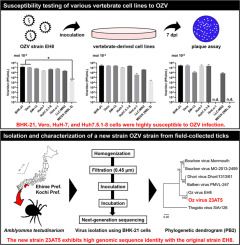Pathogens, Vol. 14, Pages 1020: Morpho-Molecular Identification and Pathogenic Characterization of Fusarium and Colletotrichum Species Associated with Intercropped Soybean Pod Decay
The fruiting stage of soybean (Glycine max L.) is critical for determining both its yield and quality, thereby influencing global production. While some studies have provided partial explanations for the occurrence of Fusarium species on soybean seeds and pods, the fungal diversity affecting soybean pods in Sichuan Province, a major soybean cultivation region in Southwestern China, remains inadequately understood. In this study, 182 infected pods were collected from a maize–soybean relay strip intercropping system. A total of 10 distinct pod-infecting fungal genera (132 isolates) were identified, and their pathogenic potential on soybean seeds and pods was evaluated. Using morphological characteristics and DNA barcode markers, we identified 43 Fusarium isolates belonging to 8 species, including F. verticillioides, F. incarnatum, F. equiseti, F. proliferatum, F. fujikuroi, F. oxysporum, F. chlamydosporum, and F. acutatum through the analysis of the translation elongation factor gene (EF1-α) and RNA polymerases II second largest subunit (RPB2) gene. Multi-locus phylogenetic analysis, incorporating the Internal Transcribed Spacer (rDNA ITS), β-tubulin (β-tubulin), Glyceraldehyde 3-phosphate dehydrogenase (GADPH), Chitin Synthase 1 (CHS-1), Actin (ACT), Beta-tubulin II (TUB2), and Calmodulin (CAL) genes distinguished 37 isolates as 6 Colletotrichum species, including C. truncatum, C. karstii, C. cliviicola, C. plurivorum, C. boninense, and C. fructicola. Among these, F. proliferatum and C. fructicola were the most dominant species, representing 20.93% and 21.62% of the isolation frequency, respectively. Pathogenicity assays revealed significant damage from both Fusarium and Colletotrichum isolates on soybean pods and seeds, with varying isolation frequencies. Of these, F. proliferatum, F. acutatum, and F. verticillioides caused the most severe symptoms. Similarly, within Colletotrichum genus, C. fructicola was the most pathogenic, followed by C. truncatum, C. karstii, C. cliviicola, C. plurivorum, and C. boninense. Notably, F. acutatum, C. cliviicola, C. boninense, and C. fructicola were identified for the first time as pathogens of soybean pods under the maize–soybean strip intercropping system in Southwestern China. These findings highlight emerging virulent pathogens responsible for soybean pod decay and provide a valuable foundation for understanding the pathogen population during the later growth stages of soybean.











